Chopping boards are vital tools for consumers who love to cook and have a keen interest in the process of cutting and chopping different food items. As a seller, it’s crucial to be well-informed about the technical nuances of these boards in order to employ the top strategies to market and sell them profitably. Luckily, this article covers essential tips to help sellers understand the different types of chopping boards, their features, benefits, and what to look out for before selling them. So read on to learn how to offer the best chopping boards for your buyers in 2024.
Table of Contents
A brief look at the chopping board market
5 things to consider before offering chopping boards
The bottom line
A brief look at the chopping board market
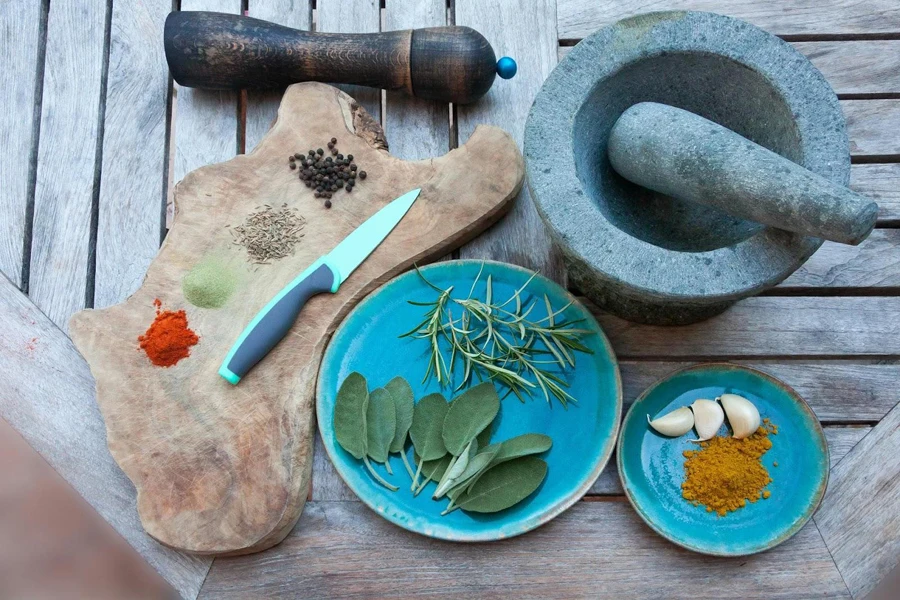
Chopping boards are one of the many kitchen accessories set to witness steady growth over the next few years. Given how essential they are, it’s not a surprise the market is booming and still showing a lot of potential. Experts say the global chopping board market rose to US$ 1.29 billion in 2023 while expecting those numbers to readjust to US$ 2.11 billion by 2030 at a 7.3% compound annual growth rate (CAGR) over the forecast period.
Asia Pacific remains the largest regional market for cutting boards, with 35.6% of the 2023 market share. North America will be the second-largest regional market, with a 25.2% market share, while Europe, despite holding only 16.5% of the market, will register the highest CAGR over the forecast period.
5 things to consider before offering chopping boards
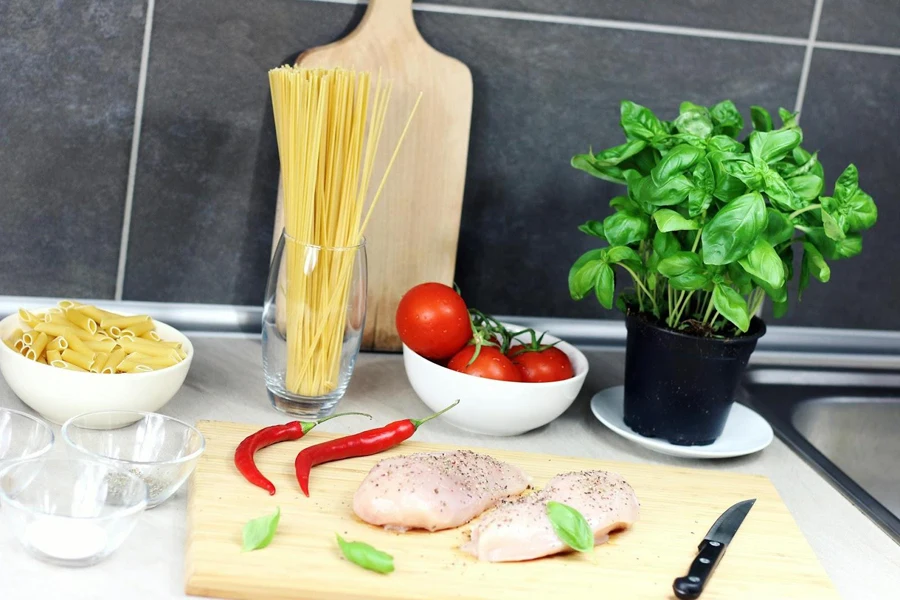
Material
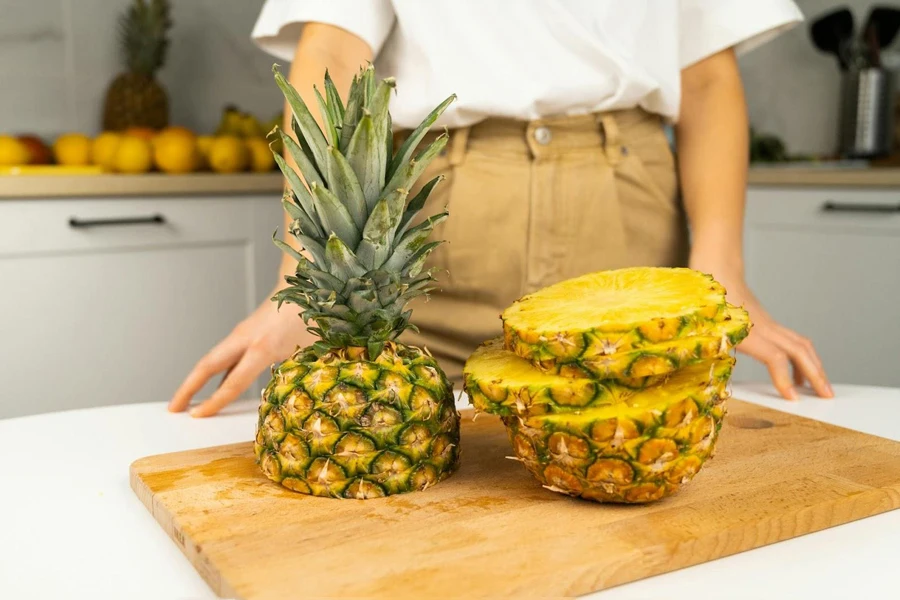
Chopping boards are only as good as the material manufacturers use to make them. With so many material choices available, knowing which ones to offer consumers may require some hard work. But don’t worry—this section will provide more information on what all the chopping board materials offer.
Plastic chopping boards
When it comes to chopping boards, plastic ones are probably the first ones consumers will think of, and for good reason. They are super affordable, and consumers can just toss them in the dishwasher, which is a big plus for busy kitchens, whether professional or at home. But hold up, there are some downsides to consider. Because plastic is softer, these boards can get scratched up easily.
Not only does that not look great, but it’s also a perfect hangout spot for bacteria. And here’s something most consumers don’t think about: those little bits of plastic. When consumers are slicing and dicing, tiny plastic fragments can sneak into their food. Even though consumers can wash them in the dishwasher, the cheaper ones might not hold up well and become out of shape. So, as a rule of thumb, avoid plastic chopping boards unless target consumers want the most affordable option.
Glass chopping boards
Glass chopping boards might catch your eye, especially if consumers cook at home. They are tough and a breeze to wipe clean. But here’s the kicker: they are not so great for knives. Tempered glass is just too hard, and consumer’s knives will feel it, too. As a result, they’ll lose their sharpness faster than consumers can say “chop-chop.”
And it’s not just knives consumers have to worry about. The slippery surface of these glass boards can turn any kitchen into a hazard zone. So, even though they might look sleek, many experts suggest avoiding glass chopping boards.
Bamboo chopping boards
Bamboo chopping boards have a lot going for them. They are a greener option than glass and plastic because bamboo rapidly grows and is easily replaced. Bamboo has built-in germ-fighting power, so consumers don’t need to go wild with harsh chemicals or oils to keep their chopping boards clean.
They are usually easier on the consumer’s wallet than fancier hardwood boards like oak or walnut. However, bamboo is also as hard as nails. That means consumers’ knives may not be too happy after a few rounds with a bamboo chopping board—they may get dull or even chip if they are not careful.
Wooden chopping boards
These chopping boards have everything consumers want in the perfect product: cleanliness, toughness, knife-friendliness, and aesthetic looks. And here’s a surprising fact: wooden boards are super hygienic. It’s easy to think wood would easily harbor many germs, but that’s not true.
Because wood chopping boards are a bit softer, knives nicking them won’t leave a spot deep enough for bacteria to fester. So, as long as consumers keep them clean, wooden boards are top-notch for keeping things germ-free. Sure, they might cost consumers a bit more than other types upfront, but many also see them as worth the investment for the quality and durability they are getting.
Size and thickness
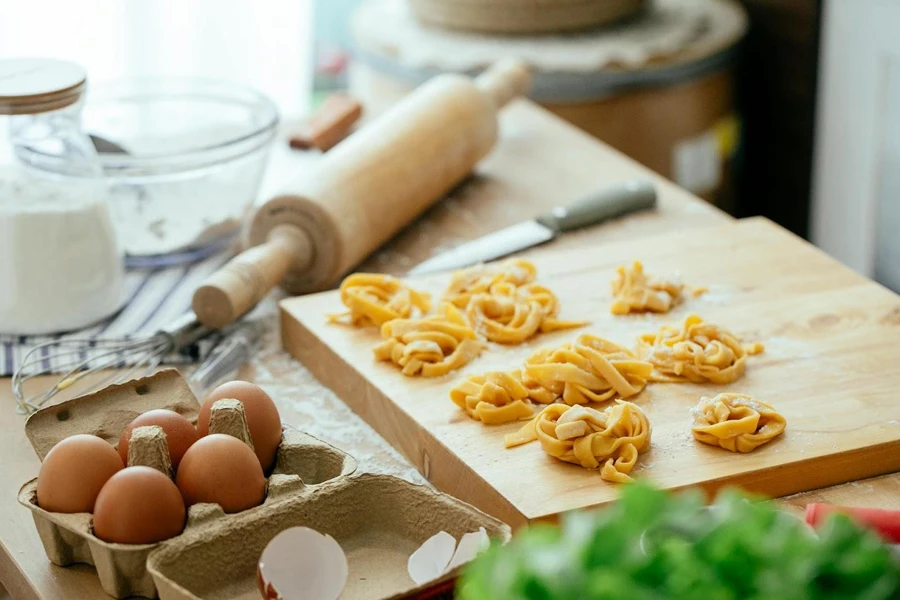
Size and thickness are absolute must-consider factors for chopping boards. These determine what consumers can do with these essential kitchen accessories. Depending on what consumers want to prepare, the perfect size must accommodate everything without spilling over the edges. Check the table below for more information on chopping board size and what they can handle.
| Board size | Perfect for |
| Small boards (around 12 x 8 inches) | Best for quick tasks like cutting small fruits or vegetables. |
| Medium boards (around 15 x 10 inches) | A good general-purpose size for most everyday tasks. |
| Large boards (around 18 x 12 inches) | Great for handling larger cuts of meat or fruits and multiple ingredients. |
The thicker the chopping boards are, the more stable they will be. Hence, thicker boards have lower chances of slipping and wobbling while consumers chop. More importantly, thicker chopping boards are more resistant to warping, cracking, and deep scarring from knife cuts. And here’s the juicy part: most quality cutting boards range from 1 to 2 inches thick. So, a 1.5-inch thick board offers the perfect balance of weight and stability.
Shape
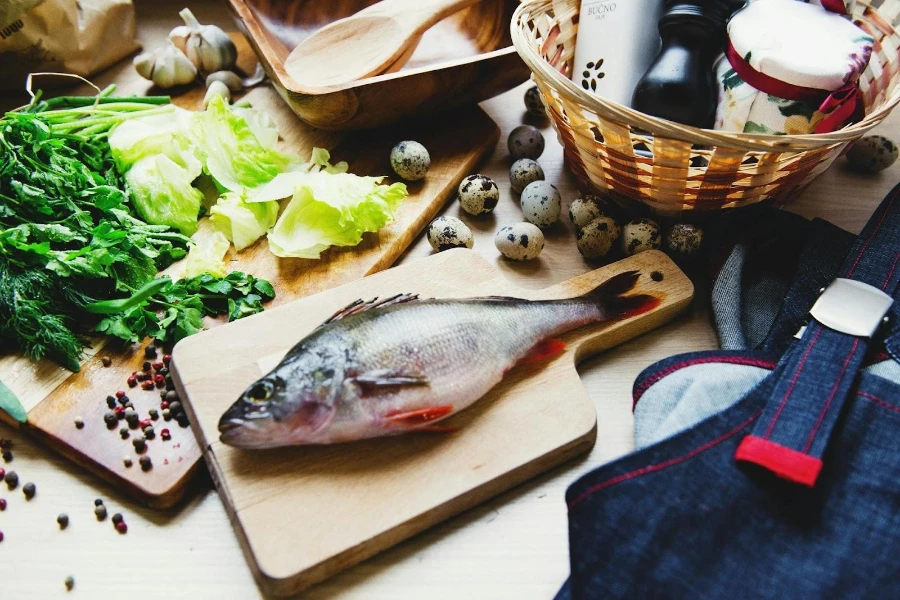
Shape definitely plays a role in choosing chopping boards to sell, but it’s more about the target consumer’s personal preference and specific tasks than a strict necessity. Regardless, sellers must still understand the different shapes they can offer their consumers and what they can do.
Rectangular chopping boards are the most popular and versatile shape. They offer enough usable surface area for various chopping tasks and can handle different knife movements. Overall, they are great all-rounders, making them good for even slicing and dicing all kinds of ingredients. Consumers may also go for square boards, similar to their rectangular cousins but with slightly more compact profiles.
Another excellent shape is a round chopping board. They are the go-to for presenting cheese, bread, or charcuterie platters, making them even more versatile than rectangular variants. Round chopping boards also work well for tasks like rolling dough, mincing herbs, or other activities requiring circular motion.
Alternatively, consumers may also love paddle boards. They have elongated designs with handles that make them perfect for slicing bread or meat. The handles on these boards also allow for better control and leverage when slicing. Plus, paddle boards are also great for specific serving presentations.
Chopping boards can also come in fun shapes, like animals, leaves, or hearts. They can be great conversation starters or look amazing at themed servings. Novelty boards can also add a bit of fun and decoration to any kitchen.
Extra features
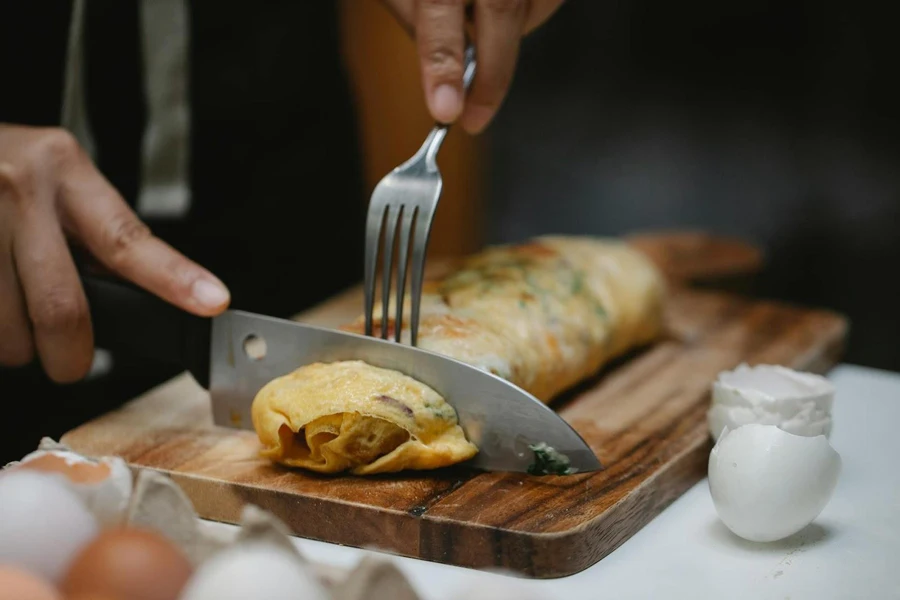
Chopping boards can have various extra features to enhance their functionality and convenience. While these features add value, sellers must consider if they align with their target consumer’s needs and preferences, as some might come with trade-offs. Here’s a breakdown of some common extra features and why consumers may find them useful.
Non-slip grips/feet
These prevent the board from sliding around the consumer’s countertop while they chop, improving safety and stability. Non-slip grips are great for anyone who prioritizes safety and a wobble-free chopping experience—though this feature restricts consumers to only one side of the board.
Juice grooves/wells
These channels collect juices from meat, fruits, or vegetables, preventing them from running off the board and making cleanup easier. Boards with this feature are the perfect option for consumers prepping juicy items, but they are unnecessary for chopping dry ingredients like herbs or spices.
Measurement markers
Etched markings on the board’s surface help with portion control and eliminate the need for separate rulers. This feature is super handy for bakers or cooks who need to frequently measure ingredients directly on the chopping board.
The bottom line
Chopping boards remain a kitchen essential in today’s world. They provide a clean, suitable surface for consumers to chop, slice, and dice multiple ingredients, from meat to vegetables and fruits. That’s why 201,000 people are searching for them to replace their old ones or get chopping boards for their new kitchens. But before businesses can cater to this market, they must leverage this guide to learn how to choose the most attractive ones in 2024!
And finally, don’t forget to subscribe to the Home and Garden section of Alibaba Reads for the latest updates!




